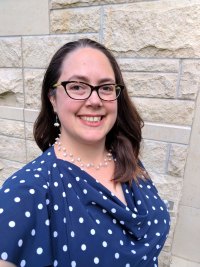NSF REU at K-State: Laser-matter Interactions at the Atomic and Nanoscales
The K-State REU program offers summer fellowships to do world-class research in our friendly physics department in the scenic Flinthills. We are funded by the National Science Foundation.
Physics Education Research (PER)

Dr. Sanjay Rebello: What do our eye movements tell us about how we solve physics problems?
Email: srebello@phys.ksu.edu
Uncovering thought processes used while solving physics problems is a complex task, but by measuring eye movements, we gain a window into what one focuses on and assumedly, what they are thinking about. We are interested in investigating the connection between students' eye movements and their cognition when solving problems. For the summer project, the REU student will use an eye tracker to collect eye movement data from introductory physics students solving physics problems. The student will then look for patterns in the eye movement data and relate these to students' cognitive processes. Further, we may also investigate how we can facilitate students to improve their problem solving skills by providing visual cues that can alter their eye movements. It is anticipated that work from this project will result in submission of a proposal for a peer-reviewed paper to be presented at next year's National Association for Research in Science Teaching, with the REU student as first author.
 Dr. Eleanor Sayre: Response curve methology
Dr. Eleanor Sayre: Response curve methology
Email: esayre@phys.ksu.edu
What factors affect learning in introductory physics classes? Does math preparation matter? what about class size, textbook, or teaching methods? Do different kinds of students learn differently? In this project, we study introductory students' learning in large and small enrollment classes. Data come from diverse institutions all over the US. This summer project involves analyzing data using analysis tools developed by prior REU students, and developing new analysis tools for use by future students as well as faculty. Possible topics include: vectors, electric fields and potentials, kinematics, hydrostatics, epistemology, and physics identity. Additional information about the project is available at www.zaposa.com/home2/responsecurves
Dr. Eleanor Sayre: Network analysis
Email: esayre@phys.ksu.edu
Physics education research (PER) is a young and growing field, and what counts as good research is changing rapidly as new techniques and theories from cognate fields are adapted for use to study student learning in physics. In this project, we use cutting-edge techniques from network and collaboration theory to study the field of PER as a whole. Who does good research? What are the boundaries of the field, and how have they changed with time? What is the shape of the PER network? This research project will give you an excellent overview of the field in addition to creating new scientific knowledge, and is especially appropriate for students considering graduate school in PER.
Dr. Eleanor Sayre: Identity project
Email: esayre@phys.ksu.edu
What is a physics laboratory for? What are physics group learning environments for? One of the fundamental "hidden curriculum" outcomes of learning environments such as laboratories or problem-based learning is to help develop students' identities as physicists. In this emerging area in PER, you will be on the cutting edge of identity development research and examine how students develop their physics identity. Our central research question uses qualitative research methods to measure how students transform from being a physics student to a physicist. The focus of this REU project is on the role that instructors play in the development of a student's physics identity. This project involves both the analysis of existing data and the gathering of new data. Additional information about this project is available at www.zaposa.com/home2/identityproject